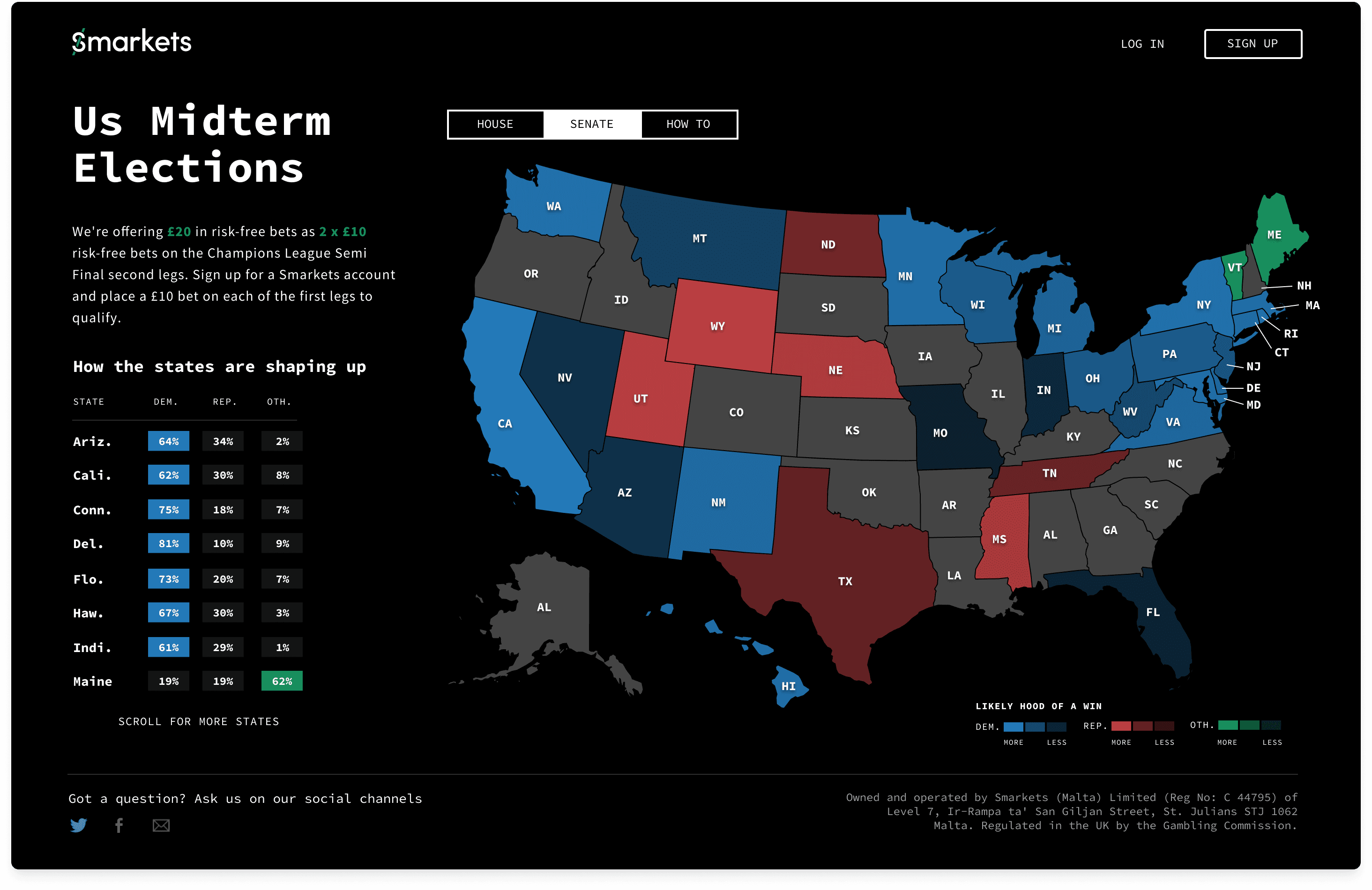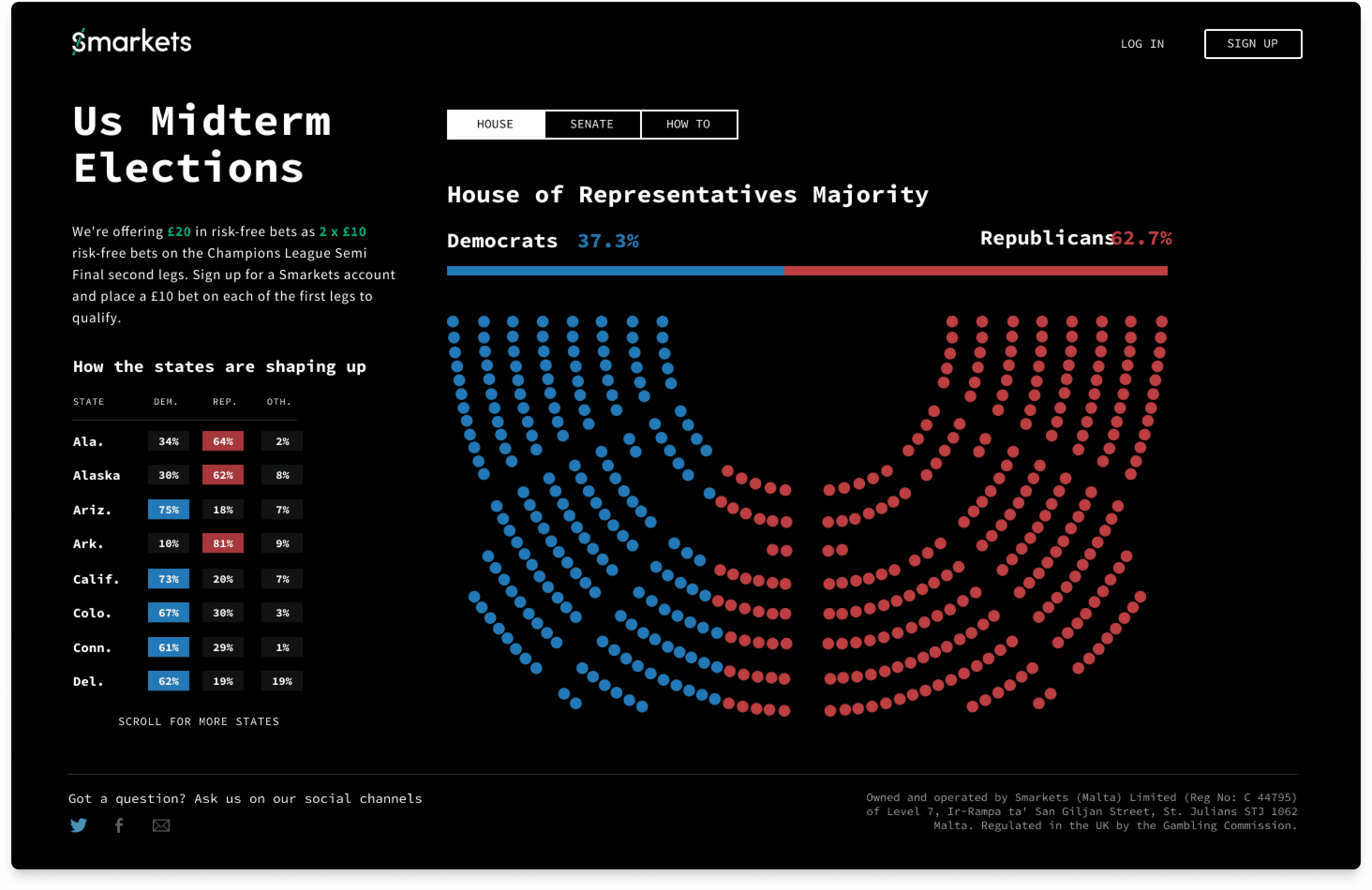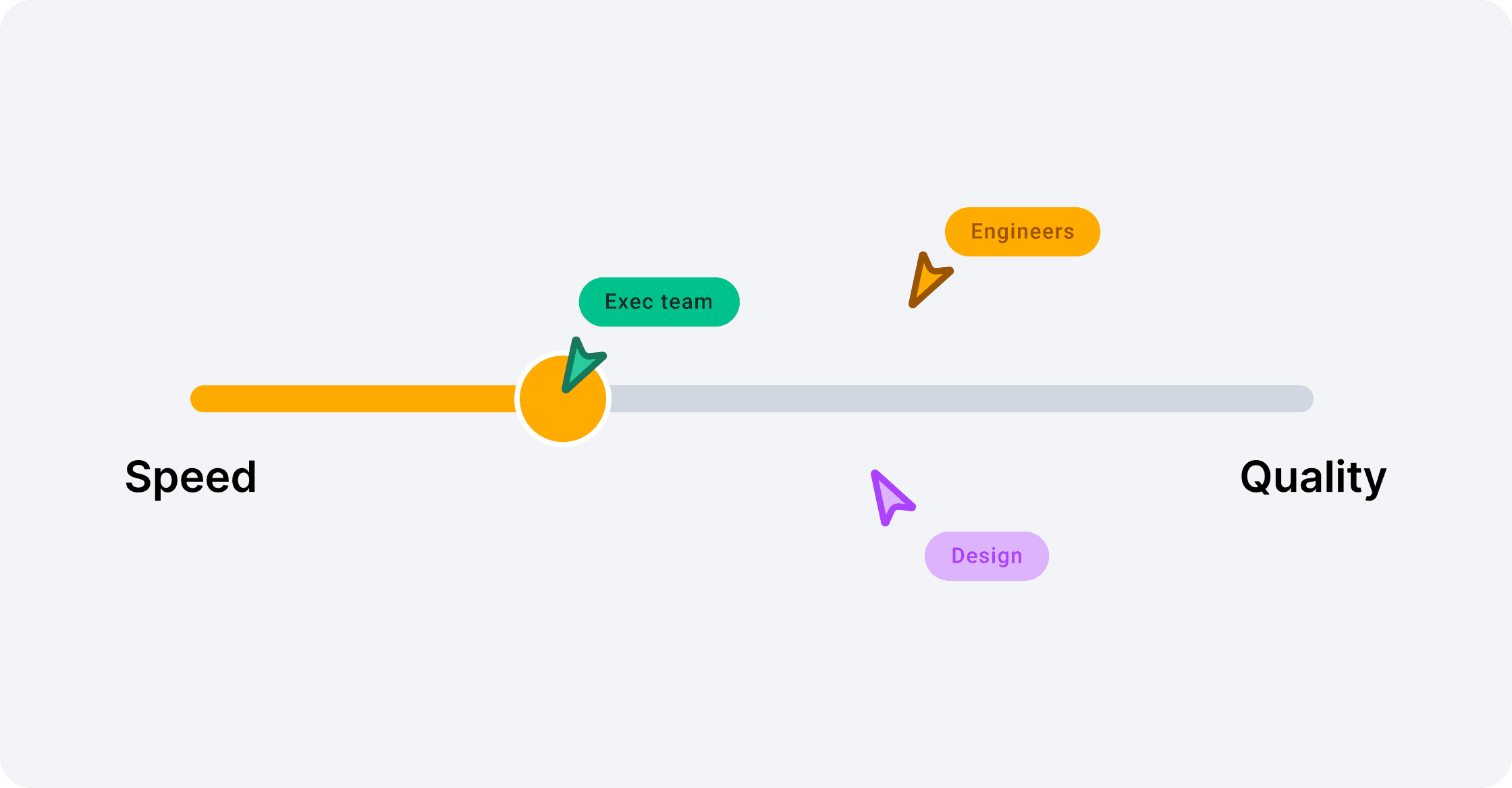Smarkets had a lot of political markets, and we wanted to see if we could match the changes in the market to news events to show how opinions changed in the lead-up to a vote. It wasn’t a new idea. Politico had something similar for years, using poll data, but hadn’t done a great job presenting the information in a readable way. The goal was simple: present our data in a way that could be shared and used in press coverage after the announcement of the result.
Desktop design for Senate election
Context and Background
As a betting exchange, Smarkets attracted the more analytic-minded types of bettors who wanted to play the market more than rely on chance. These bettors were big fans of data, and seeing how liquidity in a market shifted over time, we accommodated this desire by introducing charts on our markets showing this movement.
In the lead-up to the 2020 election, we wanted to see if we could match the market changes to the press coverage as it was shaping up to be another decisive US election. The decision was made to use the US midterms as a testing ground for this idea. The press coverage the event would get, and the data analytics that outlets like Bloomberg, Politico, and other global publications would produce gave us the perfect opportunity to validate whether our markets were a true reflection of mass public opinion.
Iterating on designs with the team
Design Process
What we did was nothing new; political analysts had been doing it for years. So, how were we going to differentiate ourselves? The solution was simple: we'd have live charts.
We knew from experience that if something significant happened related to a political market, we’d see a spike in activity, and more extensive changes happened towards closing a market. If we could simplify this, it could be used in press coverage as they often report on betting markets.
After a few rounds of iteration, we created a landing page that would house visualisations similar to what journalists would use after their analytics. This included a state and senate map that would change colour depending on the likelihood of an outcome. Working closely with our development team, we got as close to real-time as possible. We also ensured that it would work equally well on mobile, given that this is where most intended users, including journalists, would be viewing it.
Desktop design for the house election
Conclusion
Although our end piece looked amazing and accomplished what we had set out to do, we should have noticed a couple of elements that would have improved the experience overall.
First, we had opted for whole states in our visualisation to simplify things, but many viewers wanted a much more granular view and would have preferred to have seen each district and how it was falling rather than the state. The other issue was that the separate page needed to be more discounted from the live markets, making it difficult for viewers to act upon or drill into the information presented.
Both are very valid points and one that we went on to correct when we repeated this for the UK general elections in 2019. We used a hexagonal representation of the UK and embedded the visual across all the relevant pages, highlighting the relevant markets. This change had a much more significant impact, and we saw increased activity in these markets.




